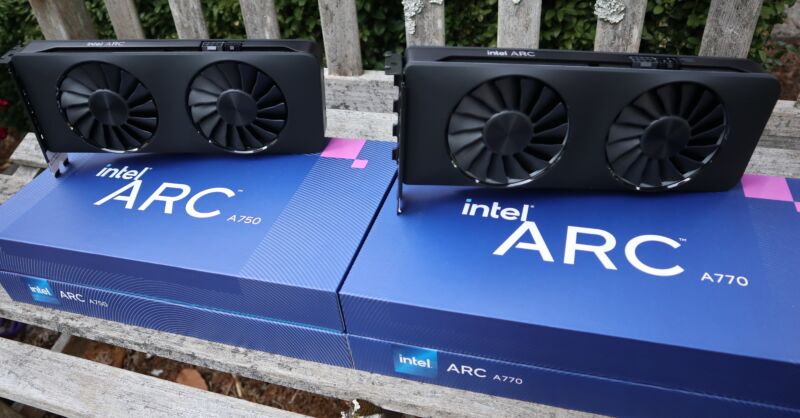-
 chevron_right
chevron_right
New Intel GPU drivers help address one of Arc’s biggest remaining weak points
news.movim.eu / ArsTechnica · Friday, 18 August, 2023 - 13:00 · 1 minute

Enlarge / Intel is playing up the cumulative performance improvements for DirectX 11 games since its Arc GPUs launched almost a year ago. (credit: Intel)
When they launched last fall , Intel's drivers for its Arc dedicated graphics cards were in rough shape. The company's messaging at the time—and for months beforehand—was something along the lines of, "We're aware, and we're working on it."
I tend to be skeptical of these kinds of " we'll fix it in post " promises; you should buy products based on what they do now and not what the manufacturer promises they will one day be able to do, especially for something like consumer graphics cards where there are plenty of alternatives. But credit where it's due, Intel has put quite a bit of work into improving its drivers in the year or so since the first Arc cards launched.
Today the company has rounded up a collection of improvements made to its DirectX 11 drivers since launch, with a collection of games that run about 19 percent faster on average than they did last October. Though Arc's performance in modern DirectX 12 and Vulkan games has always been good for the price, older APIs like DirectX 9 and 11 were particular weak points of Arc's when compared to competing cards like the Nvidia GeForce RTX 4060 and 3060 series and the AMD Radeon RX 7600 and 6600 series.

